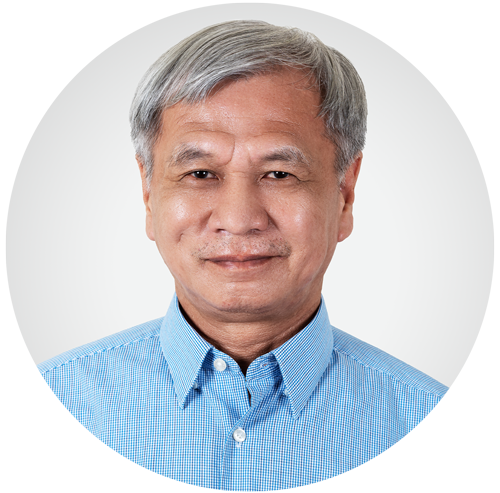PATIENT SELECTION
Is the Paradise Ultrasound Renal Denervation (uRDN) procedure right for your patients?
Paradise uRDN procedure candidates may include a range of patients like the ones listed below.*
For Health Care Professional educational purposes only.

Patients with uncontrolled hypertension who may have history of, or are at high risk for cardiovascular events
67 year-old male; uncontrolled hypertension of 5+ medications with coronary artery disease

Read the full Patient Profile
History
- Type II diabetes x 10 years
- Coronary artery disease s/p non-STEMI 2003 s/p angioplasty and stent to mid LAD (no other significant obstruction), Echo: EF 45%, LVH
- Social history: 21 pack-year, quit 20 years ago, no alcohol, no illicit drug use
Family history: hypertension, diabetes, colon cancer
Medications
Adherent to medication: Olmesartan/HCTZ 100 mg/25 mg QD, Metoprolol XL 100 mg QD, Amlodipine 5 mg daily (cannot tolerate higher dose dt edema), Atorvastatin 80 mg QD, Metformin, ASA.
Physical exam:
- Office BP: 152/87 mmHg; afebrile
- Ambulatory BP monitoring: daytime 146/82 mm Hg, nighttime 138/78 mmHg
- Home BP monitoring: 158/84 mmHg (average over 7 days)
- Obesity (BMI 32 kg/m2); gained 15 lbs over past 2 years
- eGFR 46 mL/min/1.73 m2
- Urine albumin-creatinine ratio 52 mg/g
Clinical challenge
Patient is at risk due to existing cardiovascular diseases, with the risk specifically heightened by uncontrolled hypertension. Secondary hypertension causes have been excluded, including primary aldosteronism, pheochromocytoma, and renovascular disease.
Patient criteria and therapy decision
Patient is a candidate for the Paradise uRDN procedure as he has high cardiovascular risk associated with his medical and family history.
Patients with uncontrolled hypertension who have elevated BP despite 3+ medications
68 year-old female; resistant hypertension with 3+ medications

Read the full Patient Profile
History
- Hypertensive for 5+ years
- Social history: never smoked and uses little alcohol
- Family history: hypertension and stroke
Medications
Non-adherent to medication: Clonidine patch 0.2, Bumetanide 1 (2x per week), Azilsartan 80; 21 medications attempted but cannot achieve control; no known allergies.
Physical Exam and labs:
- Office BP: 160/69 mmHg; HR 76 BPM; RR 11; afebrile
- Obesity (BMI 35 kg/m2)
- Ambulatory BP monitoring: daytime 155/82 mmHg, nighttime 163/90 mmHg
- Normal kidney function (eGFR and urine albumin-creatinine ratio)
Clinical challenge
Patient is at risk for cardiovascular diseases, has tried 5th and 6th line hypertension treatment, including Spironolactone. Secondary hypertension workup excluded primary aldosteronism, pheochromocytoma, and renovascular disease.
Patient criteria and therapy decision
Patient is a candidate for the Paradise uRDN procedure because of failure to achieve control with multiple medications, non-adherence and high risk of cardiovascular disease.
Patients with uncontrolled hypertension who have history of hypertensive emergency
55 year-old male; uncontrolled hypertension with intolerance to medication

Read the full Patient Profile
History
- Hypertensive for 10+ years; hospitalized multiple times on hypertensive emergencies
- Episodes of epistaxis, headache, and occasional palpitations
- Social history: never smoked and uses little alcohol
- Physically fit and exercises intermittently; his mother has hypertension, but his siblings do not
Medications
Adherence unknown: Lisinopril 10 mg, once daily, and nifedipine 120 mg/day, extended-release, once daily.
Side effects
Hydrochlorothiazide interfered with his sexual function, and beta blockers made him feel “sluggish mentally.” He tried acupuncture but found it unhelpful.
Physical Exam and labs:
- Office BP: 155/105 mmHg; HR 80 bpm; RR 11; afebrile
- Obesity (BMI 32 kg/m2)
- Ambulatory BP monitoring: daytime 150/92 mmHg, nighttime 153/85 mmHg
- Highs in 240/180 leading to hypertensive emergencies
- Normal kidney function (eGFR and urine albumin-creatinine ratio)
- Cardiac exam revealed a grade 2/6 holosystolic murmur at the base
- Chest film revealed mild cardiomegaly, with left ventricular predominance, as well as a tortuous or dilated ascending aorta, for which further evaluation was scheduled
Clinical challenge
Patient cannot tolerate hypertension medication due to side effects. He already has cardiovascular diseases, and his level of adherence is unknown. Secondary hypertension workup excluded primary aldosteronism, pheochromocytoma, and renovascular disease.
Patient criteria and therapy decision
Patient is a candidate for the Paradise uRDN procedure as the patient has intolerance to multiple medications and is there fore not able to achieve optimal blood pressure control.
Patients with uncontrolled hypertension who are on multiple medication and have documented non-adherence/intolerance
52 year-old female; uncontrolled hypertension with 4+ medications with documented non-adherence

Read the full Patient Profile
History
- Multiple ER visits and hospitalizations for hypertension urgency
- Hospital records note possible non-adherence to medications
- Social history: cigarette smoker
- Family history: hypertension, coronary artery disease, heart failure
Medications
Documented non-adherence: Labetalol 600 mg BID, HCTZ 25 mg QD, Lisinopril 40 mg QD, Norvasc 5 mg QD.
Physical Exam and labs:
- Office BP: 170/105 mmHg; HR 73 bpm; RR 11; afebrile
- Obesity (BMI 35 kg/m2)
- Ambulatory BP monitoring: daytime 160/92 mmHg, nighttime 153/85 mmHg
- Normal kidney function (eGFR and urine albumin-creatinine ratio)
Clinical challenge
Patient is at risk for cardiovascular diseases, with the risk heightened by uncontrolled hypertension. Non-adherence to treatment has been documented throughout her care. Secondary hypertension workup excluded primary aldosteronism, pheochromocytoma, and renovascular disease.
Patient criteria and therapy decision
Patient is a candidate for the Paradise uRDN procedure as the patient has intolerance to multiple medications and is there fore not able to achieve optimal blood pressure control.
*Case descriptions are for educational purposes only; not real patient cases. There are additional factors to consider to determine if Paradise uRDN is right for your patients and may require shared decision making with a team of medical specialists to assess risks and benefits. See Important Safety Information below. Refer to the IFU for more information prior to considering the Paradise uRDN procedure.
Important Safety Information
Rx Only. Brief Summary – Prior to use, please reference the Instructions for Use
Indications for Use
The Paradise Ultrasound Renal Denervation System (Paradise System) is indicated to reduce blood pressure as an adjunctive treatment in hypertension patients in whom lifestyle modifications and antihypertensive medications do not adequately control blood pressure.
Contraindications
• The Paradise Catheter is contraindicated in any of the following:
• Renal arteries diameter <3 mm and >8mm
• Renal artery Fibromuscular disease (FMD) Stented renal artery
• Renal artery aneurysm
• Renal artery diameter stenosis >30%
• Pregnancy
• Presence of abnormal kidney (or secreting adrenal) tumors
• Iliac/femoral artery stenosis precluding insertion of the catheter
Warnings
Failure to use the recommended balloon size may result in renal artery stenosis, dissection, perforation, aneurysm, significant vasospasm requiring intervention, ablation of unintended tissues or structures, and/or no ablation of target tissue achieved.
Energy emission in an unintended location may result in unintended tissue damage.
Do not move the Paradise Catheter during sonication.
Do not sonicate in renal artery at locations with visible plaque.
Do not deliver sonications in an overlapping arterial target zone.
Precautions
Patients with known allergy to contrast medium may be at increased risk of hypersensitivity reactions.
Only use specified coolant (Sterile water) for fluid supply. DO NOT USE SALINE.
Avoid multiple balloon inflations to achieve apposition of the balloon to the renal artery wall; multiple balloon inflations may result in increased vessel trauma.
The Paradise Catheter is for single use only. Do not resterilize or reuse. Reuse, reprocessing, or resterilization will compromise device integrity which may result in patient injury, illness, or death. Do not touch the Paradise Catheter balloon during sonication, as it may result in serious injury.
The Paradise System may interfere with or adversely affect the operation of cardiac pacemakers or other active implants, unless proper precautions have been taken or managed per the manufacturer’s instructions. When in doubt regarding possible hazards, seek qualified advice and/or consult with the manufacturer(s) prior to initiating a procedure. The Paradise Catheter is a Type CF, defibrillation-proof Applied Part.
Potential risks of renal denervation procedure/response to treatment
Ablation or thermal injury to vessel, adjacent tissue or other structures, Acute kidney injury, Angina, Anxiety, Arrhythmia, Atrial tachycardia, Bradycardia, Gastrointestinal complications (diarrhea, nausea, vomiting), Hypotension/ Dizziness and/or Headaches, Hypertension, Hyperhidrosis, Pain (transient abdominal, lower back), Renal failure or renal insufciency, Renal artery aneurysm or pseudoaneurysm, Renal infarction, Renal artery dissection, or perforation, Renal artery stenosis, Vasospasm, Vasovagal response, Stroke or transient ischemic event
Potential risks of arterial catheterization procedure
Allergic reaction to contrast, Arterio-enteric fifistula, Arterio-venous fifistula, Bleeding, Cardiopulmonary arrest, Complications related to pain and anti-anxiety medications, Death, Deep vein thrombosis, Edema, Embolism (pulmonary, renal, peripheral vasculature, plaque), Hematuria, Infection, Myocardial infarction, Pain, Vascular access site complications (pseudoaneurysm, pain, swelling, hematoma